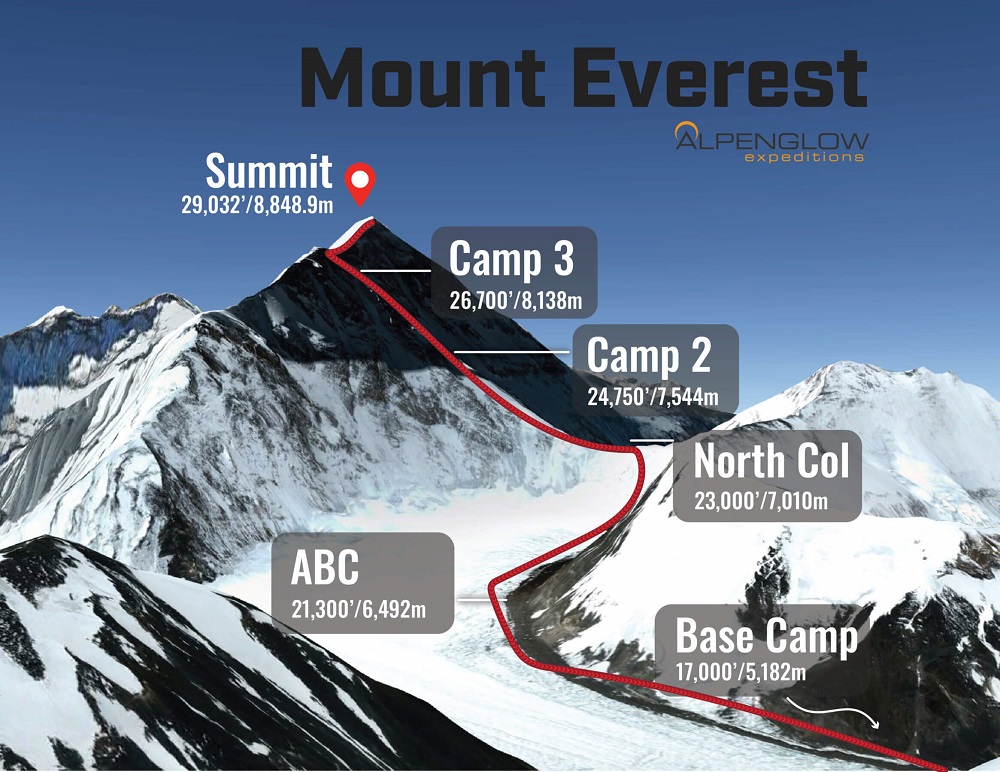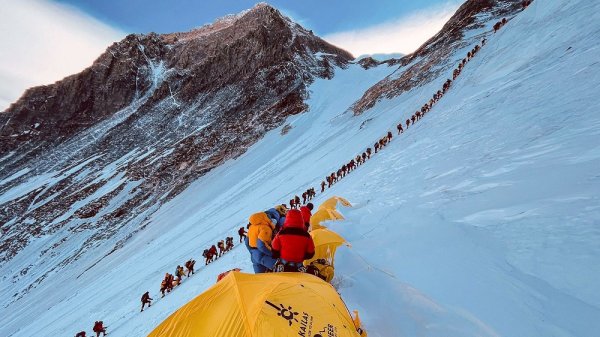The Grim reality of Mount Everest: The Deadly Trek above the death zone
Since records began in 1950, The Himalayan Database reports that over 330 climbers have lost their lives on Mount Everest, the world’s highest peak. Towering at 8,848 meters, this iconic mountain sits in the Mahalangur Himal range, marking the border between Nepal and Tibet, a region administered by China.
Conrad Anker, who summited Everest on May 1, 1999, told CNN that embarking on this climb requires accepting the possibility of death.
Severe cold, strong winds, and thin oxygen levels create a high-risk environment. “When you’re here, you make peace with the possibility of death for yourself and others. At over 8,000 meters, if the weather shifts or you lack oxygen, things quickly become dangerous,” he explained.
Near the peak, known as the “death zone,” oxygen levels plummet by up to 40%, making survival without supplemental oxygen nearly impossible. Dr. Jacob Weasel emphasized the need for rigorous physical training before the climb, although even the fittest climbers face intense challenges at such altitudes. “No matter how well you’re trained, human limitations are real here. It’s hard to survive,” he said, underscoring the necessity of oxygen equipment.
During Dr. Weasel’s own ascent, he saw numerous climbers’ remains but accepted them as a grim reality, given his medical background. A common condition called HACE (High Altitude Cerebral Edema) plagues many Everest climbers, stemming from severe oxygen depletion in the brain and causing disorientation, impaired thinking, and intense sleepiness. Dr. Weasel described how his own mind began to play tricks on him during the ascent, visualizing his children and wife in the rocks despite knowing they were safe at home.
At one point, Dr. Weasel was forced to leave behind his friend, Orianne Aymard, after she suffered a leg injury. Reflecting on this difficult decision, he shared, “I’ve spent over 10 years training to help others as a surgeon. Leaving someone behind who needed help but knowing you couldn’t do anything — that’s a hard realization.”
Alan Arnette, who summited Everest in 2014, recounted the chilling reality for climbers severely injured or dead on the mountain. “Often, teams respectfully place the deceased where they can’t be seen,” he said, adding that retrieving bodies is often impossible due to dangerous conditions. When encountering remains, he explained, “You pause, say a prayer, and continue. It’s like a severe car crash that you’re powerless to change.”
Many climbers turn back within 20 minutes to an hour, overwhelmed by the risks. Arnette once almost quit himself but pushed on, motivated by his mission to raise funds for his mother’s Alzheimer’s treatment. “I wanted to honor her and help her fight that battle,” he said.
Rescue operations by Nepalese forces and mountaineering guides use helicopters to aid the injured or recover bodies. However, the altitude and harsh weather limit their effectiveness, and rescuers themselves are at risk.
In 2023 alone, 18 climbers perished on Everest; only 13 of their bodies were recovered. The deadliest day on record occurred in 2014 when 12 guiding Sherpas lost their lives in an avalanche, underscoring the dangers of this extraordinary yet perilous ascent.


